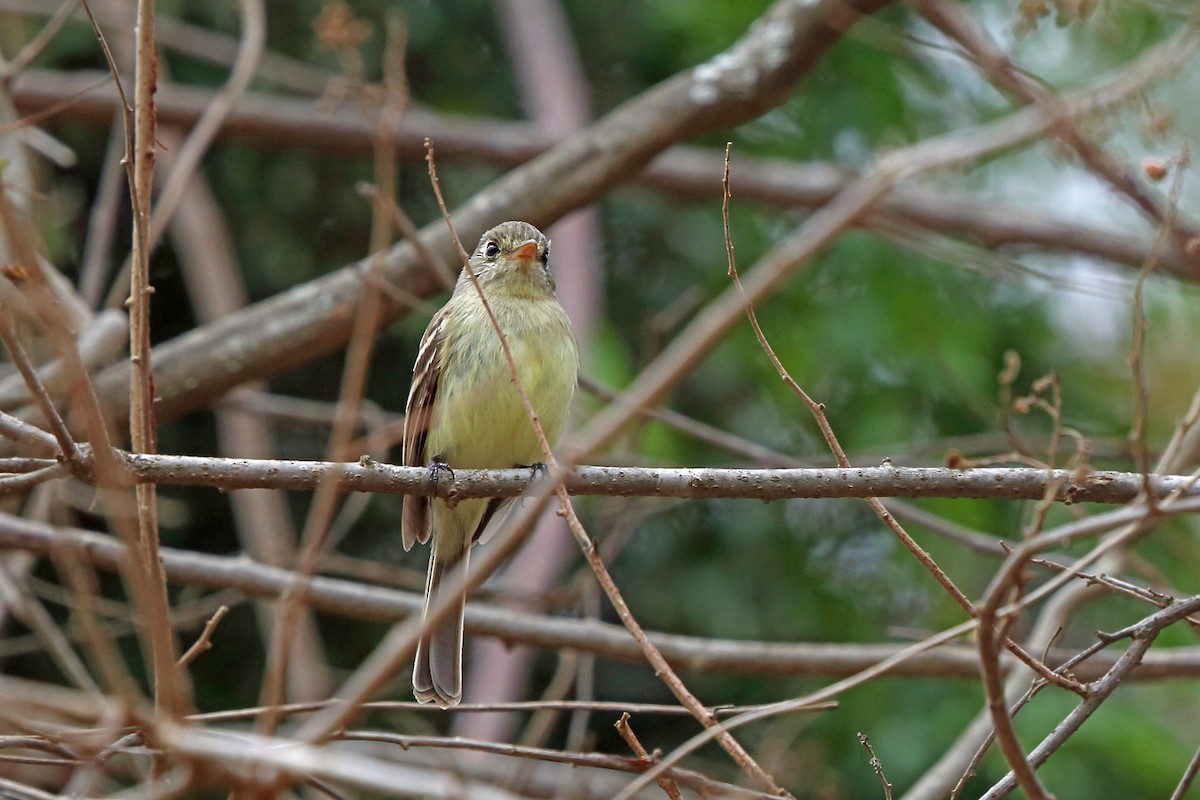Pileated Flycatcher
A species of Belted and Pileated Flycatchers Scientific name : Xenotriccus mexicanus Genus : Belted and Pileated Flycatchers
Pileated Flycatcher, A species of Belted and Pileated Flycatchers
Botanical name: Xenotriccus mexicanus
Genus: Belted and Pileated Flycatchers
Content
Description General Info
 Photo By Nigel Voaden
Photo By Nigel Voaden Description
The pileated flycatcher (Xenotriccus mexicanus) is a species of bird in the family Tyrannidae; it is endemic to western Mexico. It is a small bird with gray feathers, white chest, yellow beak and a pointed gray-feathered tip on the top if its head. The flycatcher's natural habitat is subtropical forest, but during the summer it is found in tropical high-altitude scrubland. Their diet consists mainly of insects. Deforestation has affected the pileated flycatcher's population; it is now thought to be 20,000 to 50,000 birds. The flycatcher is currently considered of least concern, and does not approach any of the criteria to be considered a "threatened species". Deforestation has increased every year around the world and is the cause of many species becoming nearly threatened or endangered and also contributes to some becoming extinct, including the pileated flycatcher which was thought to be "near threatened" until 2013. Clearing of forest trees and surroundings has negatively affected the pileated flycatcher. With the loss of trees, the flycatcher has lost its place to live and create nests to care for their eggs and young. Deforestation also contributes to the loss of other species including insects, which is the dominant source of food for the flycatcher. Survival for this species will become very unlikely if the destruction of their habitat continues. 
Size
15 cm
Nest Placement
Cavity
Feeding Habits
Pileated Flycatcher, a bird species, primarily feasts on insects, employing active foraging tactics. Its diet is marked by unique adaptations to locate and capture prey, although specifics remain less documented.
Habitat
Pileated Flycatcher typically resides in low to middle elevations of arid montane scrubs, thriving in habitats that include mesquite groves and thorn-forests. They can also be observed in semi-open, overgrazed areas, adapting to environments with altitudes usually ranging between 900 and 2000 meters. These birds occupy broad regions of dry mountainous terrains, where such vegetation types are prevalent, providing them with necessary resources for feeding and nesting.
Dite type
Insectivorous
General Info
Feeding Habits
Bird food type

 Photo By Nigel Voaden
Photo By Nigel Voaden Scientific Classification
Phylum
Chordates Class
Birds Order
Perching birds Family
Tyrant flycatchers Species
Pileated Flycatcher